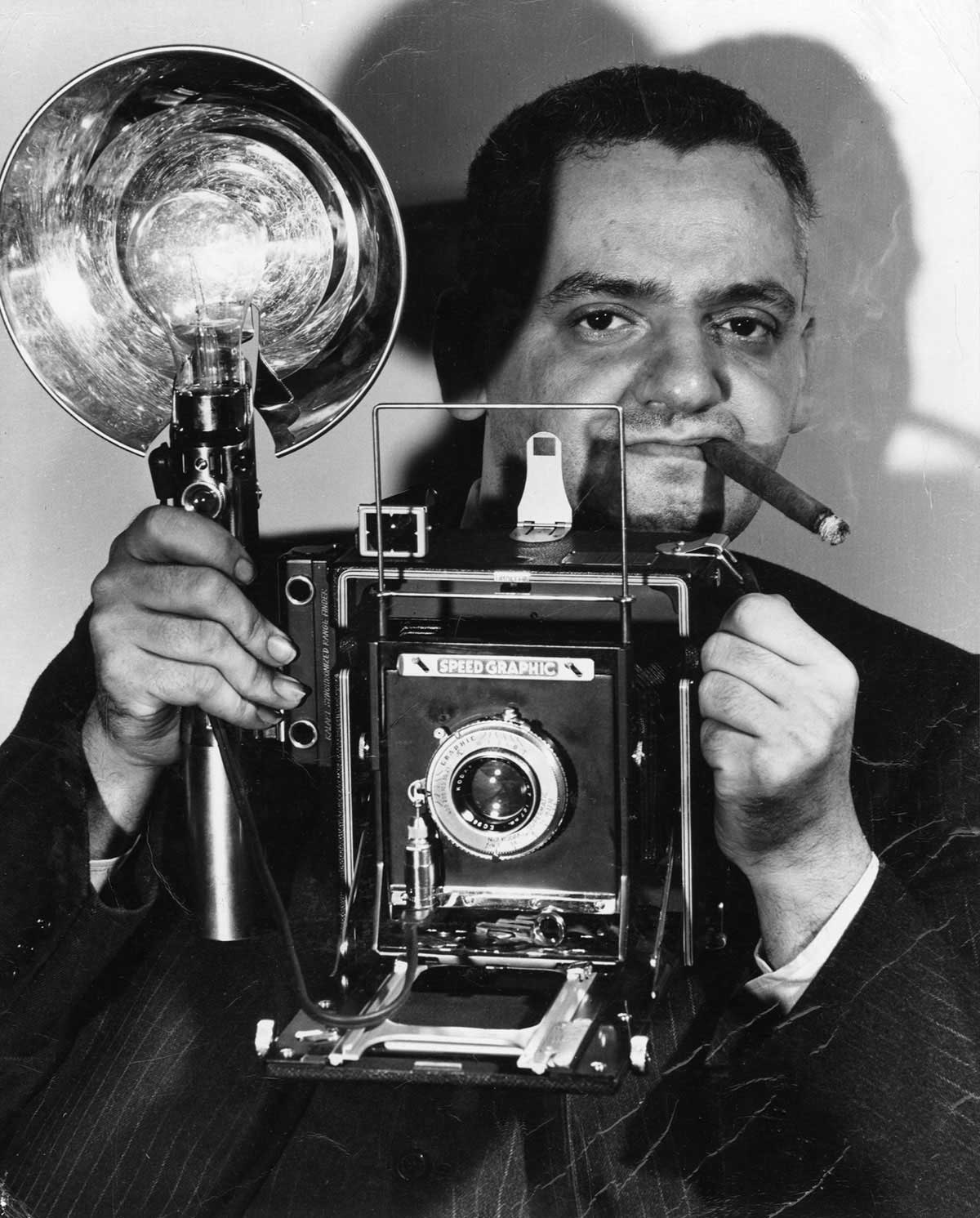“Spellbound by the mystery of murder.” That’s what the photographer who best captured the lower strata of New York used to say about himself. His photographs look like stills of films noirs, because they portray the pessimism, menace and fatalism of a city that was as disastrous as it was cosmopolitan.
Weegee was born as Usher Fellig on June 12, 1899 in Zolovich, Austrian Poland (now Ukraine). In 1909, his family emigrated to the United States and his first name was changed to its American equivalent, ‘Arthur’. He and his family settled in the Lower East Side of New York, where he met misery and precariousness.

In 1914, he is forced to abandon his studies in order to help his family financially. At age 18, he leaves his family and subsists with some occasional jobs, having to live in railway stations and shelters for the homeless, until in 1918 he began taking street photographs and got a job in a photo studio in Lower Manhattan.
Some years later, at age 24, he obtained employment as a laboratory technician at a news agency, Acme Newspictures, where he had the opportunity to photograph some accidents (such as night fires). His photographic training was almost nil. He trained himself through practice, until he managed to develop a technique of his own. He used a good flash and also included a set of spotlights that he placed 3 meters from the subject he was going to photograph.
After long days in darkrooms processing pictures and different works for a variety of newspapers, he decided to become an independent reporter in 1935. In this way, he became an event photojournalist with a peculiar style in his images. Indiscrete when it came to photographing, he got shocking black and white images, ironic and sometimes with too much explicit character. Weegee had always wanted to be different and unique, and in the process of forging his reputation, he focused on something that other reporters ignored or rejected: crime, tragedy and night.
If there was a murder, robbery, revenge among gangsters or even raids of transvestites, one thing was certain: Weegee would be there, with lights and camera in hand to take the first picture. His speed was so avid, that he arrived even before the police. His usual place to be was around the police headquarters. In 1938 he obtained permission to install a police radio in his car, making him the only photographer in New York who was allowed to tune into the police station.
At the beginning of his career, most of the city’s population was unaware of the fact that he was connected to the police radio, so they linked his “sixth sense for crime” with the use of a Ouija board. Fellig decided to take the phonetic form of the word as his professional name, emerging then the nickname of “Weegee”.
Thanks to the collaboration of the police, he managed to take the first (and therefore, most sensational) photographs of news events to sell to major publications such as The Sun, PM Weekly, Post, Daily News, among others.
His car had become an extension of his home and also his “base of operations.” In the trunk, he placed a small photo lab to quickly process the photographs and sell them “to the highest bidder” (the newspapers). “I kept everything there, an extra camera, a typewriter […] I no longer had to wait for the crime to come to me; I could go after it. ”(Weegee in his autobiography). It is here when he begins to stamp on the back of his photos “Credit Photo by Weegee the Famous.”
The collaboration with the police headquarters lasted for 10 years. His more than 5,000 reports turned him into a legendary New York chronicler; but beyond of turning crime into a show, his images were a combination of denunciation, criticism and even a cartoon of black, sarcastic and acid humor about American society at that time, because he also portrayed the high society that showed its wealth and its obvious decadence.
He also worked for the Hollywood industry from the late 40’s to the 60’s as a consultant and actor. Weegee died in New York on December 26, 1968 due to an untreated brain tumor.






